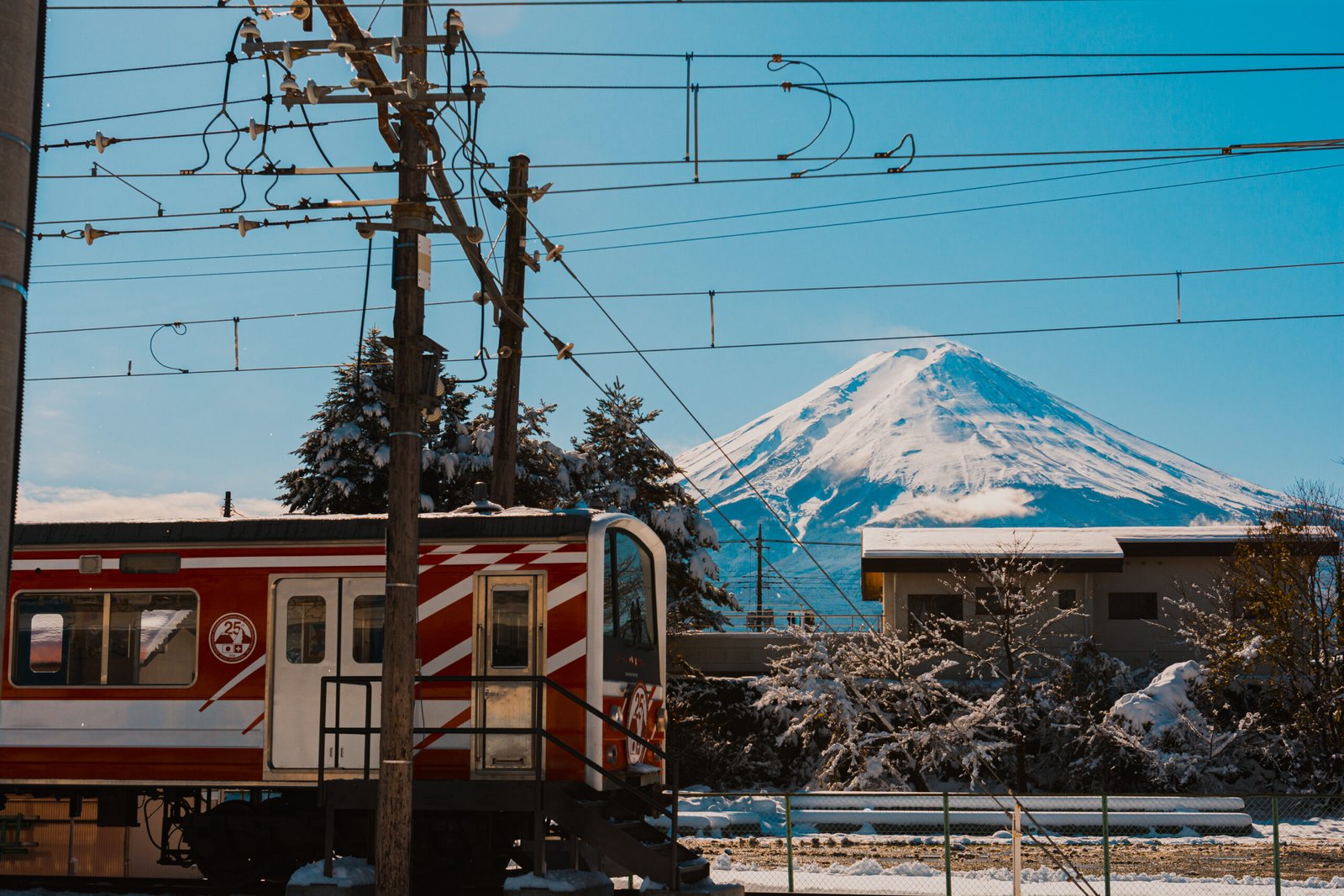Winter Holidays in Japan: Christmas and New Year Traditions
In Japan, winter holidays showcase an interesting blend of global influence and indigenous customs, with Christmas and New Year (Shogatsu) distinctly celebrated. Although Christmas is not a national holiday, it has been embraced in a unique manner. Typically, this celebration leans towards a light-hearted, romantic atmosphere rather than a religious observance. Couples often commemorate the occasion through romantic dinners, exchange of gifts, and enjoying the dazzling holiday illuminations that grace city streets. Christmas cake, especially sponge cakes adorned with strawberries and whipped cream, has become a favorite tradition, symbolizing the joyous spirit of the season.
In contrast, New Year holds immense cultural significance in Japan, marking the beginning of the new calendar year. Shogatsu is a period steeped in age-old traditions and rituals that reflect the values of reflection, family, and hope for prosperity in the year ahead. Leading up to New Year, people partake in various customs, including thorough house cleaning, which is believed to purify the home and welcome good fortune. The New Year’s celebration encompasses elements such as visiting Shinto shrines or Buddhist temples, a practice known as hatsumode, where individuals pray for health and happiness.
Another quintessential component of Shogatsu is the sending of Nengajo, New Year postcards, which serve as a means to express good wishes to friends and family. Food also plays a major role during this festive period, with families preparing osechi ryori, a selection of traditional dishes carefully arranged in lacquered boxes. Each dish holds symbolic meanings related to good health, prosperity, and happiness, emphasizing the importance of these customs in strengthening family bonds. Through both Christmas and New Year, Japan exemplifies a harmonious blend of modern festivities and deep-rooted traditions, reflecting a rich cultural tapestry.
Hidden Gems: Best Not Widely Known Places to Visit in Japan in Winter
While Japan is famous for its iconic winter destinations such as Sapporo and Hakuba, there exists a wealth of hidden gems that offer unique experiences during the colder months. These lesser-known locales provide visitors with an authentic glimpse into Japanese culture and stunning winter landscapes, making them remarkable options for winter travel.
One such destination is Shirakawa-go, a UNESCO World Heritage site nestled in the mountains of Gifu Prefecture. Renowned for its traditional gassho-zukuri farmhouses, which feature steep thatched roofs designed to withstand heavy snowfall, Shirakawa-go transforms into a picturesque winter wonderland. Visitors can explore the village and witness the unique architecture against a backdrop of snow-covered mountains, creating an enchanting atmosphere during the winter months.
Another hidden gem is the small town of Ouchi-juku in Fukushima Prefecture. Once a post station during the Edo period, Ouchi-juku is characterized by its thatched-roof buildings and stunning views of snow-clad landscapes. The town hosts an annual winter festival, where visitors can enjoy local cuisine, including negi soba, a hot soba noodle dish served with long green onions. The combination of authentic experiences and breathtaking scenery makes Ouchi-juku a memorable stop during the winter season.
For those seeking a unique cultural experience, the quaint town of Kinosaki Onsen in Hyogo Prefecture is a must-visit. Famous for its seven public hot springs, or “onsen,” Kinosaki Onsen offers visitors the chance to soak in thermal waters while strolling through charming streets lined with willow trees. In winter, guests can enjoy the beautiful sight of snow-capped roofs while indulging in traditional onsen-related experiences. The town’s beautiful winter landscapes and local hospitality make it a perfect winter retreat.
Each of these lesser-known destinations embodies the spirit of Japan in winter, encouraging travelers to explore beyond the typical tourist paths. By visiting these hidden gems, one can create lasting memories while experiencing the rich cultural heritage that Japan has to offer during the winter season.
Culinary Delights of Winter: Japanese Winter Foods
During the winter months, Japan’s vibrant culinary scene transforms, showcasing a variety of traditional foods that not only provide warmth but also symbolize the spirit of togetherness. One of the most iconic winter dishes is nabe, a flavorful hot pot meal that brings family and friends together around a shared table. Various ingredients, including tofu, vegetables, and thin slices of meat are simmered in a rich broth, creating a comforting dish that reflects the essence of communal dining. Each region in Japan has its unique take on nabe, with variations such as yosenabe and chanko nabe, further showcasing the diversity within Japanese cuisine.
Another beloved winter favorite is oden, a warming stew that consists of various ingredients such as daikon, konjac, and boiled eggs, all slowly cooked in a flavorful dashi broth. Traditionally enjoyed at roadside stalls and convenience stores, oden offers heartiness and comfort on chilly nights. The communal aspect of sharing oden, where ingredients are often selected according to personal preferences, mirrors the Japanese value of togetherness during the winter season.
Sweet treats also play a significant role in Japan’s winter celebrations, with mochi being a standout delicacy. This rice cake is not only enjoyed in various forms, such as in ozoni, a traditional soup served on New Year’s Day, but also as delicious daifuku filled with different fillings. Another delightful winter snack, yaki imo, or roasted sweet potatoes, can be found at food stalls and is cherished for its natural sweetness and warming properties. These culinary delights are not merely about sustenance; they embody the cultural significance of sharing meals with loved ones, fostering warmth and connection amid the winter chill.
Top 5 Off-the-Beaten-Path Winter Destinations for Nature Lovers, City Enthusiasts, and Onsen Seekers
When it comes to winter travel in Japan, many tourists flock to well-known areas. However, some hidden gems offer unique experiences that cater to diverse interests. Below is a curated list of five winter destinations that promise authenticity and enriching cultural experiences.
First on the list is Niseko, a ski resort located on Hokkaido’s northern island. Renowned for its exquisite powder snow, it attracts skiing enthusiasts from around the globe. Beyond skiing, Niseko offers stunning landscapes that transform with the snowfall, perfect for nature lovers. Various local eateries serve delicious Hokkaido cuisine, enriching the experience for those seeking a genuine taste of the region.
Next is Kinosaki Onsen, located in Hyogo prefecture. This picturesque town is famous for its seven public onsens, allowing visitors to soak in their mineral-rich waters while enjoying the serene winter atmosphere. The town is enriched with traditional architecture and a charming atmosphere, perfect for leisurely strolls in yukata (traditional robes). For those looking to experience Japan’s onsen culture authentically, Kinosaki is a must-visit destination.
The third hidden gem is Shirakawa-go, a UNESCO World Heritage site, celebrated for its traditional gassho-zukuri farmhouses. During winter, the area becomes a captivating winter wonderland, providing breathtaking views, and opportunities for photography. Visitors can engage with local crafts and partake in seasonal festivals, making it an ideal spot for cultural immersion.
Fourth is Otaru, a charming port city near Sapporo. This destination is known for its romantic ambiance, especially during the winter months when its canals are lit with lanterns. Artisans create exquisite glassworks and music boxes, providing a unique shopping experience. Otaru also features cozy cafes that serve delightful sweets, suitable for city enthusiasts looking for less commercialized experiences.
Last but not least is Aizu-Wakamatsu, a city rich in samurai history. Visitors can explore historical sites, including Tsuruga Castle, and enjoy local delicacies like kecchobukuri (sake). The city is often less crowded in winter, allowing for a peaceful exploration of both nature and history. Aizu-Wakamatsu offers a plethora of engaging activities for the culturally curious.
These five off-the-beaten-path destinations embody the spirit of Japan’s winter holidays, blending scenic beauty, cultural richness, and traditional experiences. Whether you are an onsen seeker, a nature lover, or a city enthusiast, these hidden gems promise to enhance your winter adventure in Japan.

